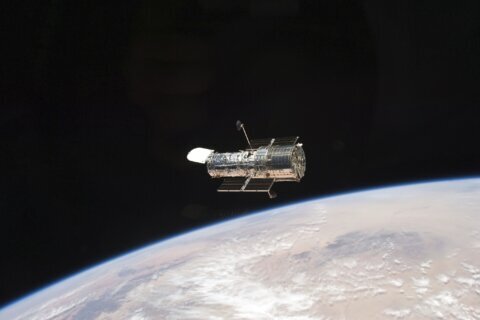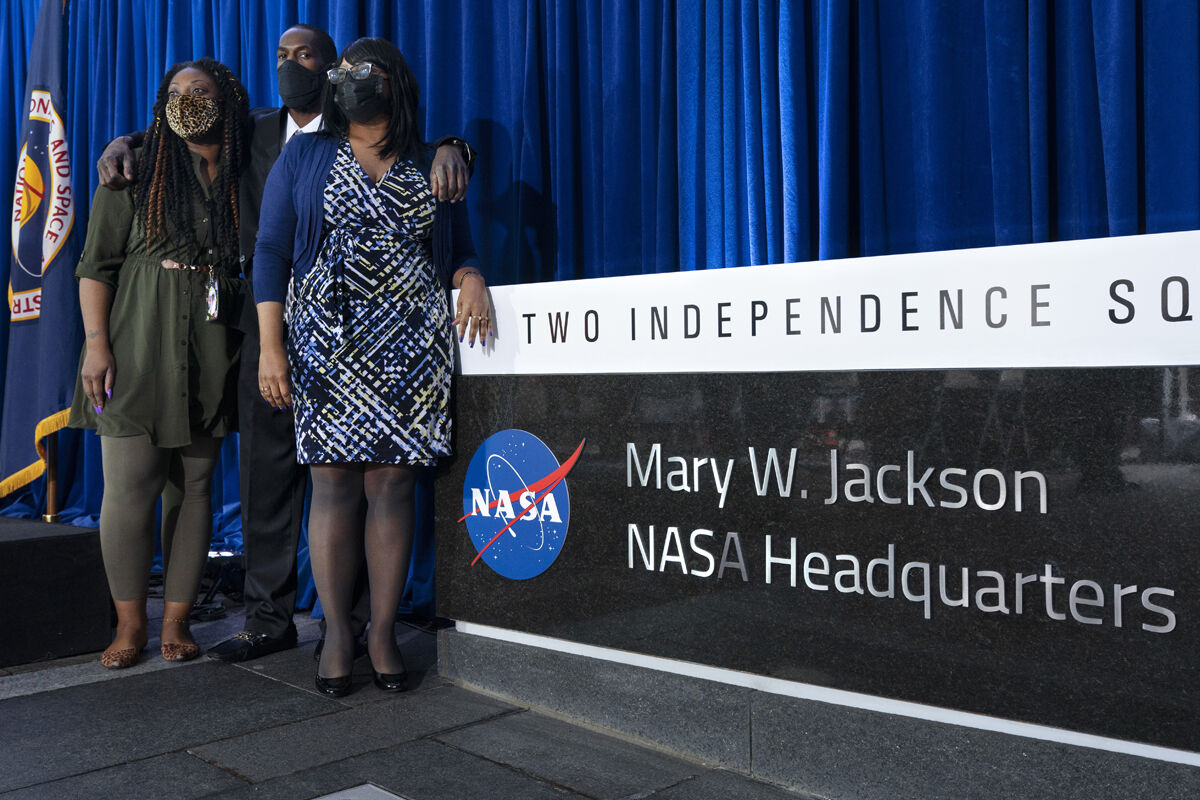
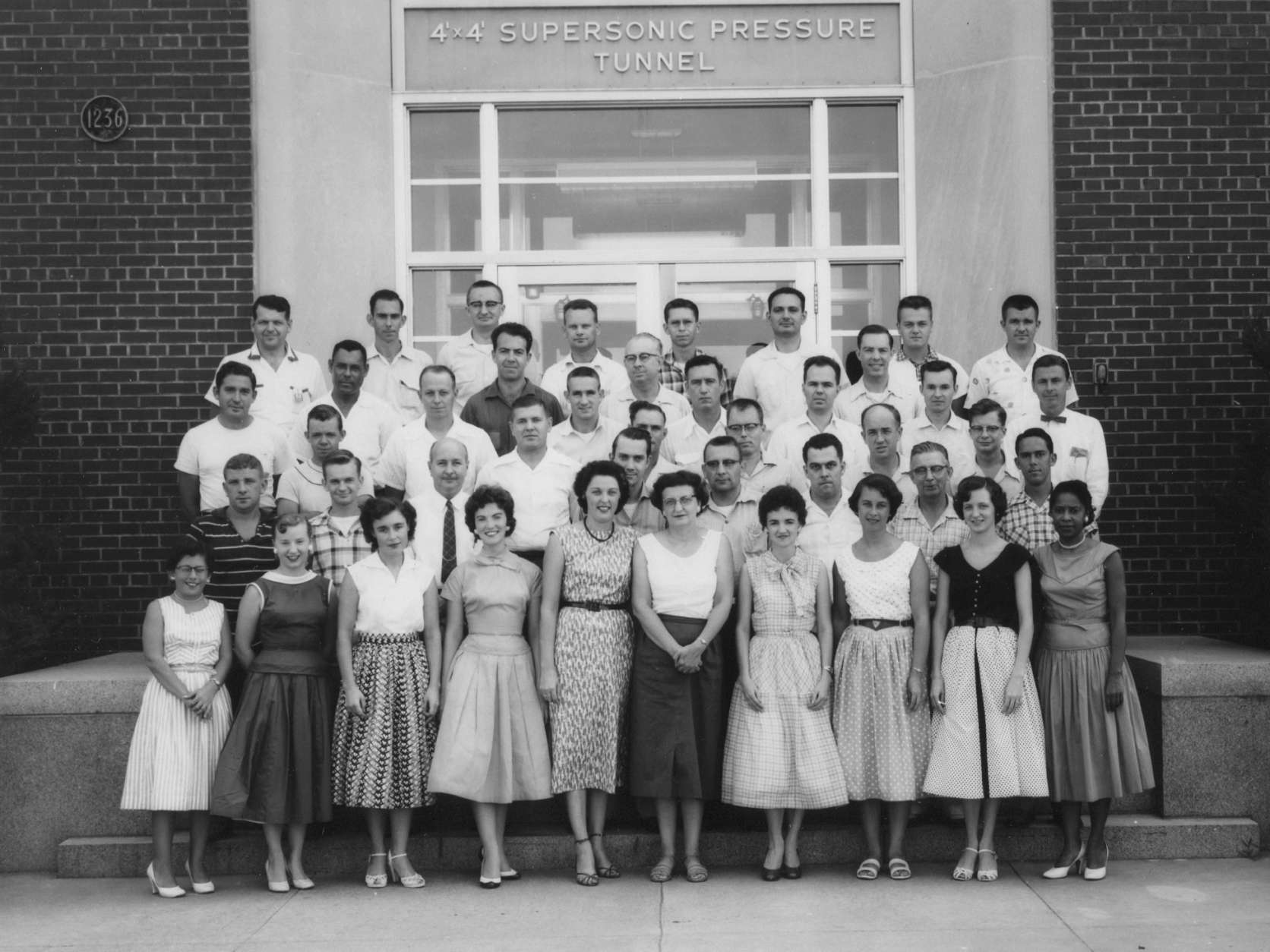
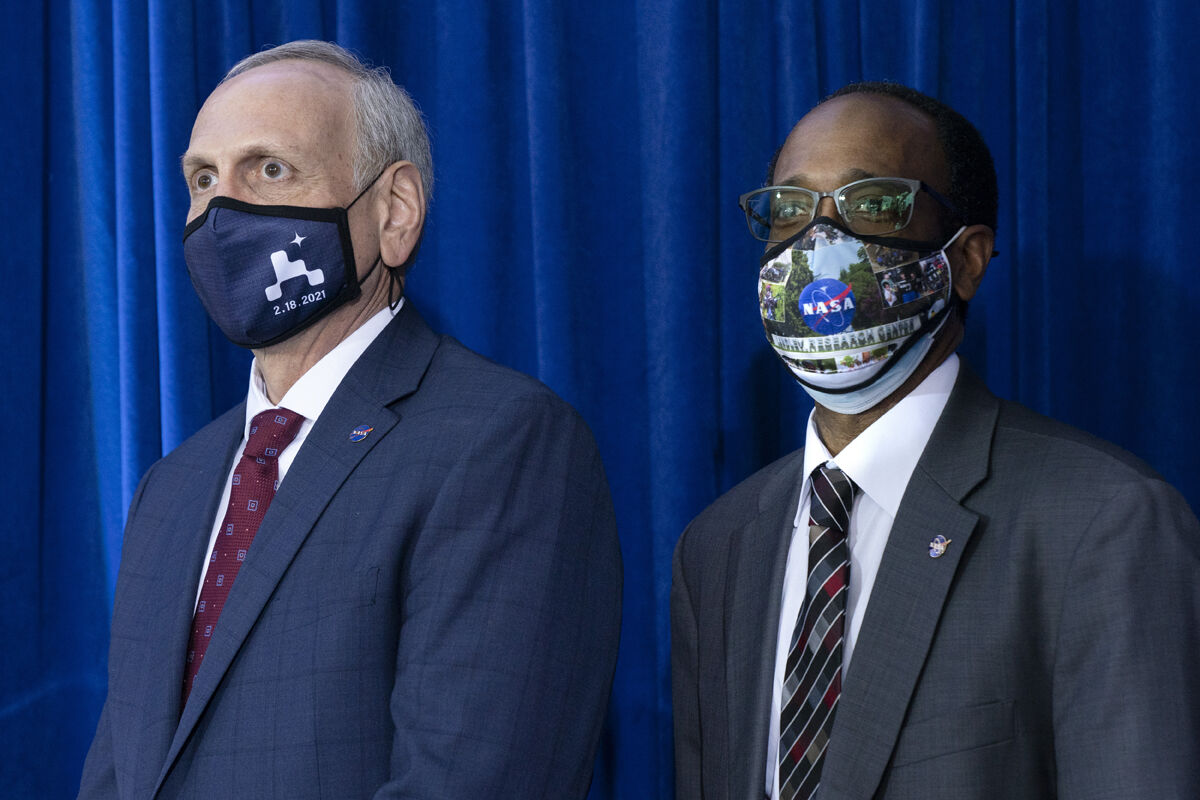
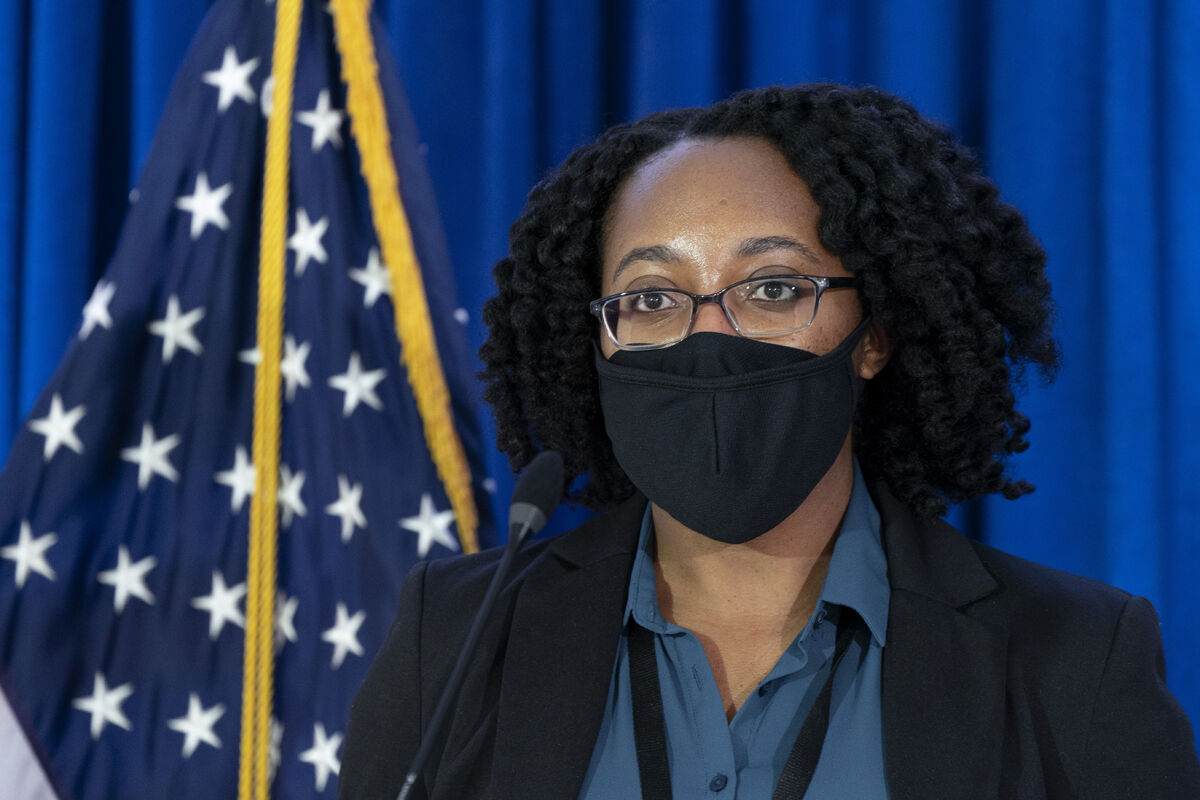
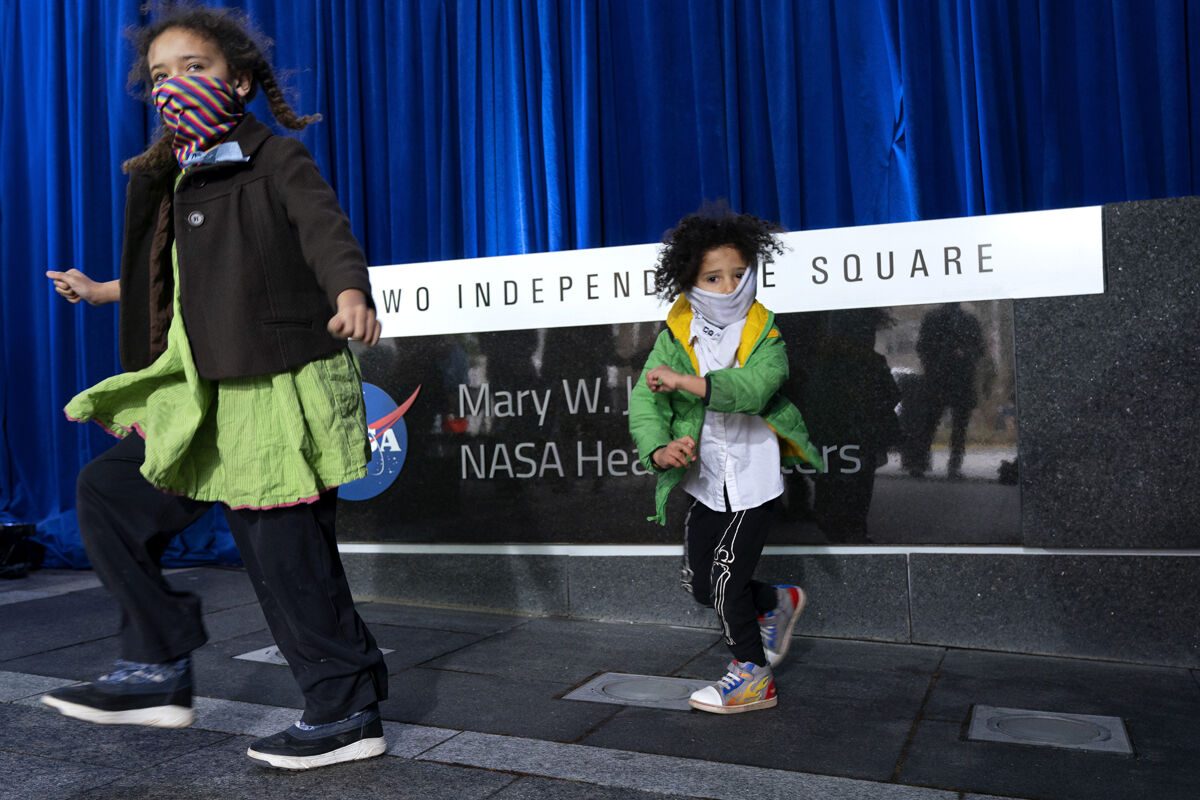
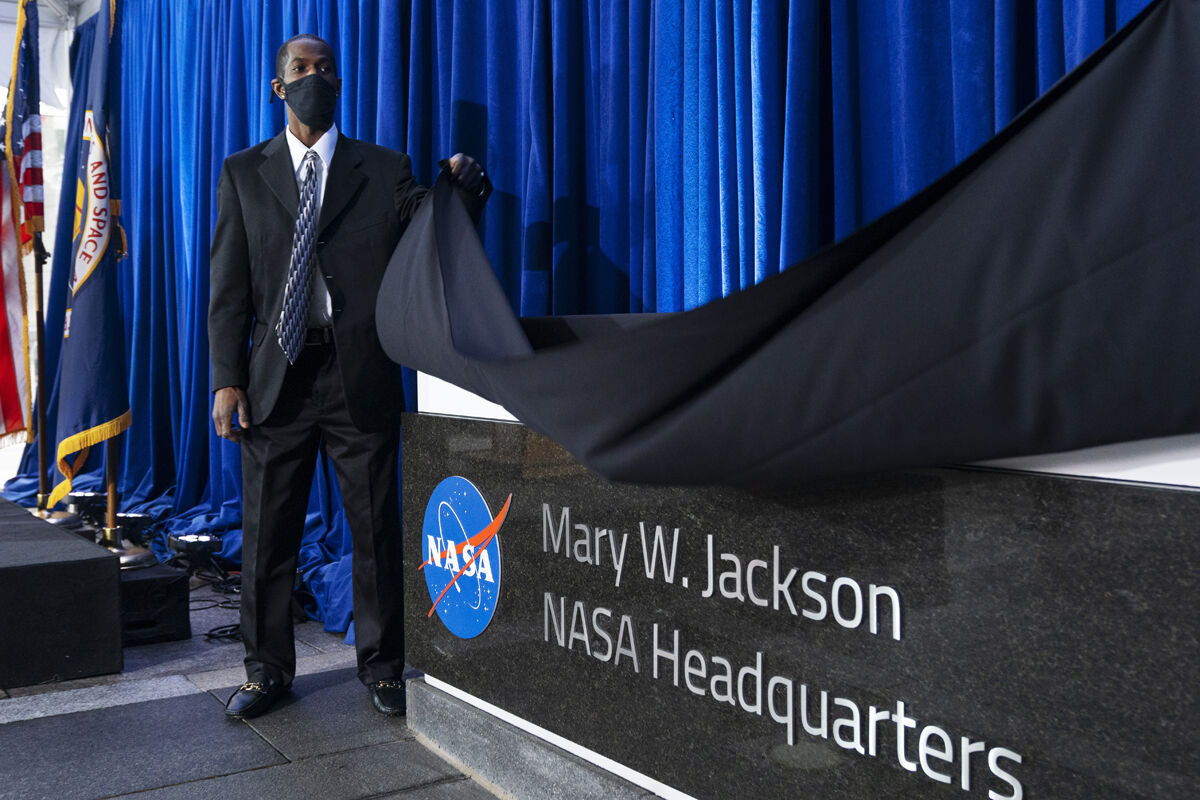

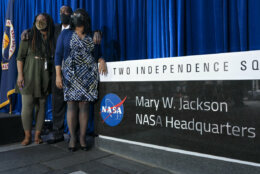
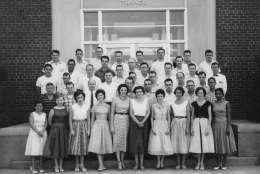
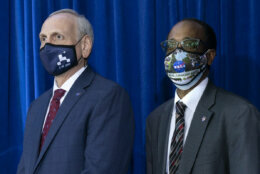
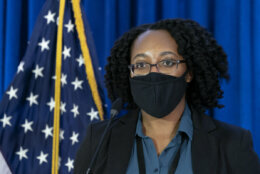
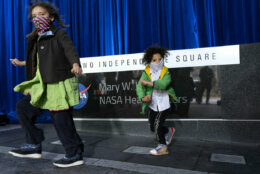
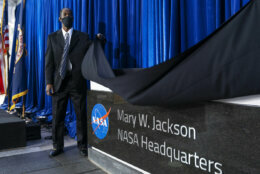

NASA’s headquarters building in downtown D.C. now has a new name, honoring the late Mary W. Jackson, the first African-American female engineer at the agency.
“Jackson’s story is one of incredible determination. She personified NASA’s spirit of persevering against all odds, provided inspiration advancing science and exploration,” said acting NASA Administrator Steve Jurczyk during a virtual dedication ceremony outside headquarters Friday.
Jackson began her career at the agency at the West Area Computing Unit of the agency’s Langley Research Center in Hampton, Virginia. She was one of a group of African-American women who were mathematicians at NASA and instrumental in getting the U.S. into space.
“Her work with other human computers, many of them Black women, not only turned around the space race but also galvanized imaginations around the world as to what we Americans can achieve,” Jurczyk said.
The women who were known as “human computers” had their story told in Margot Lee Shetterly’s 2016 book “Hidden Figures: The American Dream and the Untold Story of the Black Women Mathematicians Who Helped Win the Space Race.”
Their stories got even more attention when the book was adapted into the Oscar-nominated film “Hidden Figures” (2016), starring Taraji P. Henson, Octavia Spencer and Janelle Monáe, who portrayed Jackson.
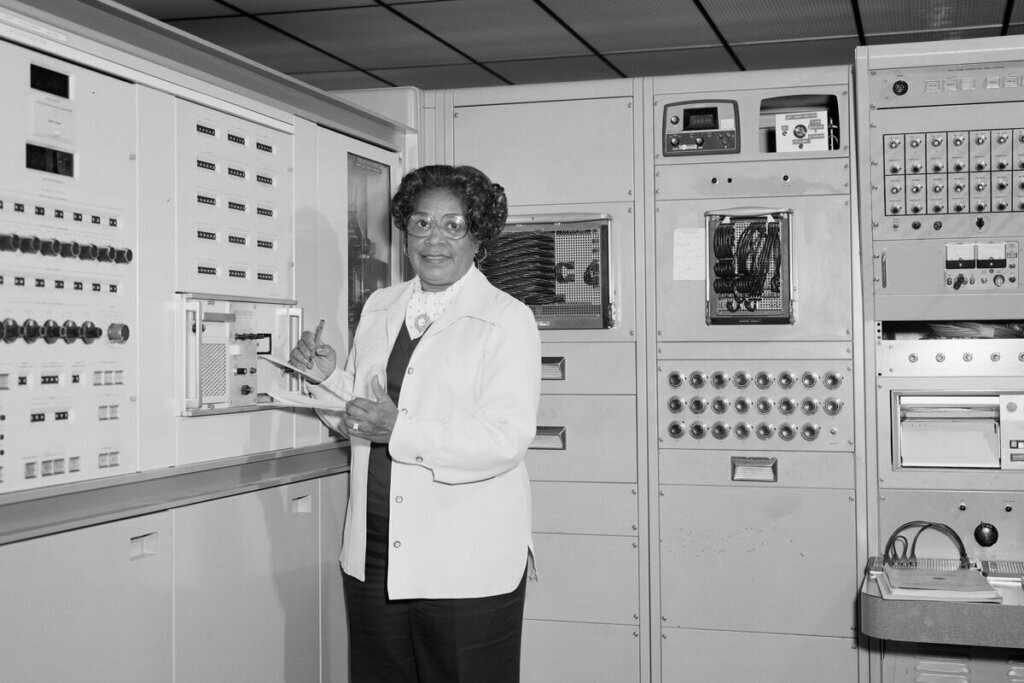
Jackson grew up in Hampton, and graduated from Hampton Institute in 1942 with a dual degree in math and physical sciences. Her first job out of school was as a math teacher in Calvert County, Maryland.
In 1951, she would take a job with the National Advisory Committee for Aeronautics, which was succeeded by NASA in 1958.
According to NASA, Jackson would later train to become an engineer, but because the needed math and physics courses were taught at then-segregated Hampton High School, Jackson had to obtain special permission from the city of Hampton to attend the classes.
After completing those courses in 1958, Jackson became NASA’s first Black female engineer.
While at the segregated West Area Computing Unit, Jackson and her “Hidden Figures” colleagues — Katherine Johnson, Dorothy Vaughan and Christine Darden — helped deliver a U.S. victory over the Soviet Union during the space race.
At the dedication ceremony on Friday, family, friends, former colleagues and current NASA officials reflected on Jackson’s life and contributions to the space program.
“This headquarters building bearing her name will be a shining symbol of her will to push beyond barriers for the benefit of all,” said Clayton Turner, director of NASA’s Langley Research Center.
Turner added, “Her example will guide us together as we reach for new heights to reveal the unknown for the benefit of humankind.”
Jackson was also known for her efforts to foster the next generation of aerospace engineers.
“She made a very special effort to meet these young aerospace engineers, to welcome them, to show them hospitality, and to give them advice.” said Dr. Christine Darden, a former engineer at the Langley Research Center, who is also a so-called “Hidden Figure” who was written about in the book but was not portrayed in the movie.
“May her name, as well as her legacy, forever be a reminder to all those who enter these mighty doors that we, as a people, have only been able to touch the stars because of ancestors like her, who had the courage, who had the resilience to overcome every obstacle placed in their way,” said historian Henry Louis Gates Jr. in a video played during the ceremony.
On the decision to name the building after Jackson, current NASA astronaut Stephanie Wilson said she hopes it will inspire young girls, and young girls of color in particular, to consider a field in science, technology, engineering or math as a career.
“It shows our youth what achievements are possible through hard work, education, dedication and commitment,” Wilson said.
“She paved the way for so many without us even knowing because she was a warrior, someone who wouldn’t take no for an answer,” said her grandson Bryan Jackson.
Bryan Jackson said he and his family are overwhelmed with joy that he can bring his children to D.C. and show them NASA’s building that now features their great-grandmother’s name.
In 2019, then-President Donald Trump signed an act into law that resulted in the women being awarded the Congressional Gold Medal for their contributions to the space program. Mary Jackson, who died in 2005, was awarded the medal posthumously.
The naming of the building after Mary Jackson comes almost two years after a bipartisan bill by Sens. Ted Cruz, R-Texas; Ed Markey, D-Mass., and John Thune, R-S.D., and former Sen. Bill Nelson led to the road outside NASA’s D.C. headquarters being named “Hidden Figures Way.”


